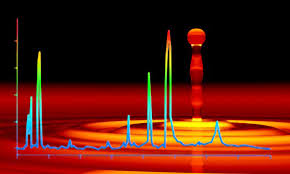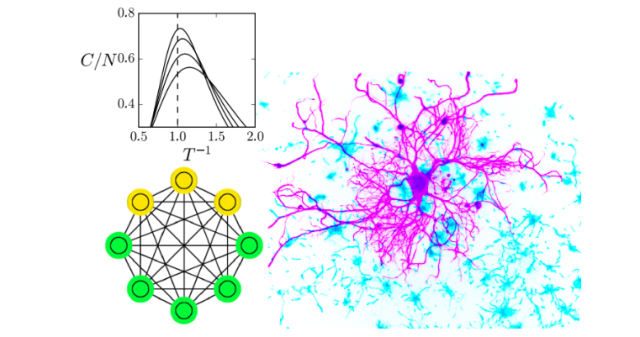Unit I (7 hrs)
Various forms of energy – renewable and conventional energy systems – comparison – coal, oil and natural gas – availability – applications – merits and demerits.
Unit 2 (10 hrs)
Solar energy - Solar radiation measurements, solar energy collector, principle of the conversion of solar radiation in to heat, Solar energy storage, solar heaters, space cooling, solar ponds, solar cookers, solar distillation, solar furnaces, solar green houses, merits and demerits of solar energy.
Unit 3 (9 hrs)
Wind energy: Basic principle of wind energy conversion, basic components of wind energy conversion system (WECS), wind energy collectors. application of wind energy.
Unit 4 (9 hrs)
Biomass energy, classification, photosynthesis, biomass conversion process, Gober gas plants, wood gasification, ethanol from wood, merits and demerits of biomass as energy source
Unit 5 (9 hrs)
Energy from Oceans and Chemical energy resources: Ocean thermal energy Conversion, energy from waves and tides – basic ideas, nature, applications, merits and demerits.
Unit 6 (10 hrs)
Patterns of energy consumption in domestic, industrial, transportation and
agricultural sectors –energy crisis and possible solutions – energy options for the
developing countries – energy storage-primary and secondary cells – fuel cells
(basics) – impact due to non-conventional energy sources – global warming.

- Teacher: Dr. Mary Varughese Physics
- Teacher: Dr. Pillai Aswathy Mohan Physics
- Teacher: SHIBI KRISHNAN Physics
- Teacher: SUCHITHRA S Physics
Unit 1- Vector Atom Model (10hrs)
Bohr’s theory, correspondence principle Somerfield’s atom model and explanation of fine structure of H line in Balmer series of hydrogen atom. Limitation of Sommerfeld atom model. Vector atom model-Various quantum numbers associated with vector atom model-, L.S and j.j couplings –application of spatial quantization Pauli's exclusion principle - magnetic dipole moment of electron due to orbital and spin motion - Spin-Orbit coupling.
Unit 2- Atomic Spectra (14hrs)
Optical spectra-Spectral terms and notations - selection rules - intensity rule and interval rule - fine structure of sodium D lines – hyperfine structure-alkali spectra - Zeeman effect - Larmor's theorem – quantum mechanical explanation of normal Zeeman effect. Anomalous Zeeman effect –Paschen-Back effect-Stark effect.
Unit 3- X-ray Diffraction (8 hrs)
X-rays- Discovery- properties -scattering -Measurement of X-ray wavelengths by ruled gratings-X-ray Spectra- continuous and characteristics X- ray spectrum Origin of continuous Spectrum -Origin of characteristic X-rays-X-ray energy level diagram. -Absorption of X-rays-Applications of X-rays
Unit 4- Molecular spectra (28 hrs)
Electromagnetic spectra-molecular energies-classification of molecules-rotational spectra of diatomic molecules-rotational energy levels-selection rules-rotational spectrum-isotope effect- bond length and atomic mass. Diatomic vibrational spectra-vibrational energy levels-selection rule-vibrational transitions-Rotation-Vibration transitions-IR spectrometer Raman scattering- classical description of Raman scattering, quantum theory of Raman scattering- -vibrational Raman spectra-diatomic molecules-polyatomic molecules-rotational Raman spectra Raman spectrometer. Electronic spectra sequences and progressions-Frank-Condon principle
Unit 5- Resonance Spectroscopy (12 hrs)
NMR principle-Resonance condition-NMR spectrometer-chemical shift-indirect
spin-spin Interaction- applications of NMR spectroscopy ESR principle- Resonance condition –ESR spectrometer-hyperfine interaction –
applications of ESR spectroscopy.
Mossbauer spectroscopy- principle -isomer shift.

- Teacher: Rini Varghese Physics
- Teacher: Seena Sivadas
Unit 1. Circuit Theory (4 hours)
Kirchhoff’s law- Ideal voltage and current sources- Thevenin’s and Norton’s theorem, Maximum power transfer theorem
Unit 2. Diode Circuits(14 hours)
Extrinsic semiconductors-n- type and – p-type semiconductors-PN junction-PN junction under forward and reverse biased conditions-r m s value and peak inverse voltage- diode characteristics-ac and dc resistances- half wave and full wave rectifiers- (average dc value of current, ripple factor and efficiency)- different types of filters(shunt capacitor, LC and RC)- break down mechanism in diodes- Zener diode- voltage regulator
Unit 3.Transistors(16 hours)
Theory of BJT operation- CB,CE and CC characteristics-alpha , beta and gamma – relation between transistor currents- biasing circuits(CE configuration)- stability factors-selection of operating point-ac and dc load lines-Q point-collector feedback; base resistor and potential divider methods- BJT amplifiers- input and output impedances-graphical analysis of CE amplifier(frequency response, band width and gain in dB)- emitter follower.
Unit 4. Power amplifiers: (5 hours)
Amplifier classes and efficiency - class A operation - transformer coupled class A amplifier - class B amplifier - push pull amplifier - basic ideas of class C operation - distortion in amplifiers. Unit 5. Feedback & Oscillator circuits (8 hours) Feedback principles – negative feedback - advantages of negative feedback - positive feedback - principle of sinusoidal feedback- oscillation - Barkhausen criterion for oscillations - RC phase shift, Hartley Oscillator, Colpitt’s, Oscillator (derivations not required).
Unit 6. Modulation (5 hours)
Fundamentals of modulation - AM, FM - frequency spectrum of AM - power in AM - demodulation of AM signal - frequency spectrum for FM
Unit 7. Special devices: (8 hours)
JFET- Basic construction - Theory of operation - Static characteristics - Drain characteristics- Advantages - MOSFET – Depletion enhancement MOSFET – Construction – Static characteristics. Uni-junction Transistor - Construction operation.
Unit 8. Operational amplifiers (IC741)(12 hours)
Introduction – Schematic symbol and pin configuration - circuit configuration and
block diagram representation – differential amplifier-ideal OP amp. - CMRR –
differential mode and common mode – virtual ground principle – parameters of OP
amp. - inverting amplifier – non-inverting amplifier –summing- differentiator integrator amplifiers.

Unit 1- Statistical Physics (18 hrs)
Statistical probability, Macro and Micro states, Phase space, Statistical ensemble, Postulate of equal probability, Maxwell Boltzmann distribution, Velocity distribution. Indistinguishability of identical particles, Bose Einstein and Fermi Dirac distribution function, comparison of three statistics
Unit 2 Research Methodology (18 hrs)
Research - Objectives and motivation in research – different types of research- research approaches- Significance of research- Research methods and methodology – Research and scientific method- Various steps in a research processimportance of literature survey- criteria of good research. Thesis/ Report writing - preliminary section (Title page, declaration of author, certificate of supervisor, table of contents, list of tables and figures, preface acknowledgement), Main Text (abstract, introduction, experimental section, results and discussion), Conclusions, references, scope for future study.
Unit 3 Error Analysis (12 hrs)
Significant figures- Basic ideas of error measurement, uncertainties of measurement, importance of estimating errors, dominant errors, random errors, systematic errors, rejection of spurious measurements. Estimating and reporting of errors, errors with reading scales, absolute and relative errors, and standard deviation, Variance in measurements, error bars and graphical representation.
Unit 4 – Disaster Management (24hrs)
Global natural disasters: Natural hazards and natural disasters, Recent major
disasters and their relief efforts, Impact of global climate change and major natural
disasters, Human adaptability of natural disasters, Fragile natural eco-environment,
Disaster reduction activity, achievements, challenges and future development
Earth quake disaster and their and their effects, Advancement in research of
earthquake disaster, earthquake and tsunami warnings, earthquake disaster
prevention, earthquake disaster mitigation
Health emergencies and diseases: environmental health and diseases, disasters and
emergencies, steps in disaster management, pre-disaster activity, role of water
supply, need for protecting large scale water supply schemes, assessment of
damaged and available and water resources, water quality testing- Personal
hygiene, control of communicable diseases and prevention of epidemics, measures
for controlling communicable diseases and epidemics.
Radiation emergencies, health consequence of radiation, measures to prevent
sudden health emergencies due to radiation

- Teacher: Dr. Mary Varughese Physics
- Teacher: Rini Varghese Physics
- Teacher: Seena Sivadas
Unit 1 – The Emergence of Quantum Mechanics (18 hrs)
Limitations of classical physics, Black body radiation curve-Optical spectra –- photoelectric effect -specific heat of solids -Plank’s quantum hypothesis, Einstein’s theory of photoelectric effect -Compton effect- Quantum theory of specific heat of solids, -Bohr model- hydrogen atom- Bohr postulates-The correspondence principle.
Unit 2-Wave Mechanics (22 hrs)
Wave nature of particles-electron diffraction- standing wave of electron in the orbit uncertainty principle -uncertainty relation among canonically conjugate pairs application- non-existence of electrons in the nucleus-ground state energy of hydrogen atom- width of spectral lines-Properties of wave function-Conditions for Physical Acceptability of Wave Function, Normalization and orthogonality condition. Superposition Principle-wave packets, relation between - Particle velocity- group velocity and phase velocity- Probability Interpretation of Wave Function -Statistical Interpretation of Wave function -probability current density in one dimension-Expectation value- Time dependent Schrodinger equation,-Time independent Schrodinger equation - stationary states.
Unit 3-One Dimensional Energy Eigen Value Problems (14hrs)
Free particle Schrodinger equation–square-well potential with infinite walls Square well potential with finite walls, square potential barrier– The Harmonic oscillator- (Schrodinger method)-
Unit 4- General Formalism of Quantum Mechanics (18hrs)
Linear vector space, Linear operator, Eigen values and Eigen functions-, Hermitian
operator, Postulates of Quantum Mechanics-Equation of motion-Schrodinger
representation- Momentum representation

- Teacher: Dr. Pillai Aswathy Mohan Physics
- Teacher: SUCHITHRA S Physics